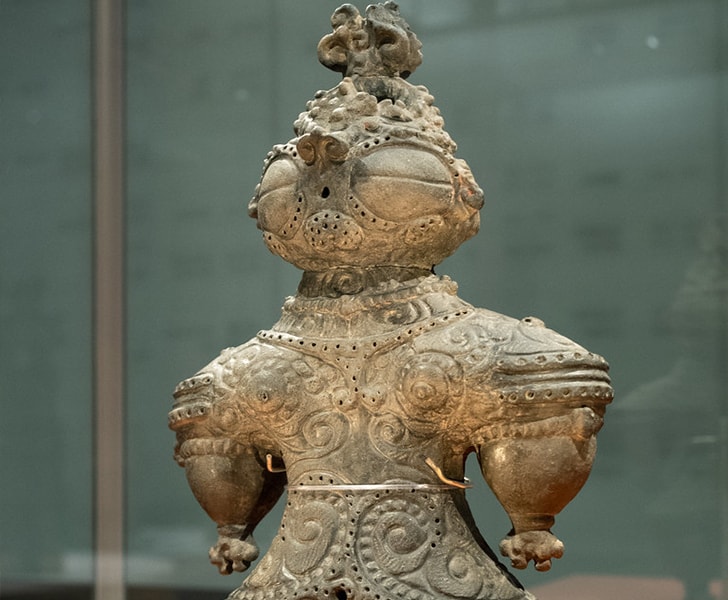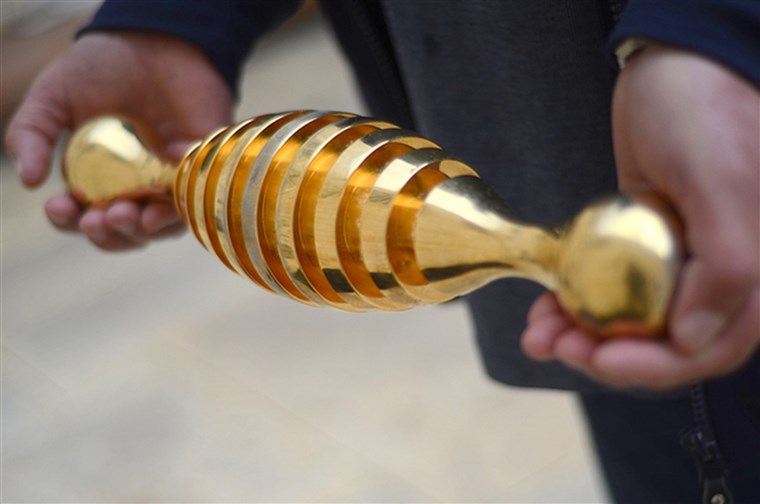
Artifacts are just things, right? Things that we use in our daily lives that we break, buy, sell, and throw in the trash. However, not every object is the same. Some objects are filled with sweet memories. Some are worth millions of dollars. Others contain thousands of years of history.
The objects we will be discussing today accommodate nothing but a gigantic question mark, though. Over the years, multiple mysterious devices have been discovered—puzzling experts due to their shape, modernity, and apparent uselessness. These are the strangest objects in the Universe, and we will tell you all you need to know about them!
Roman Dodecahedron
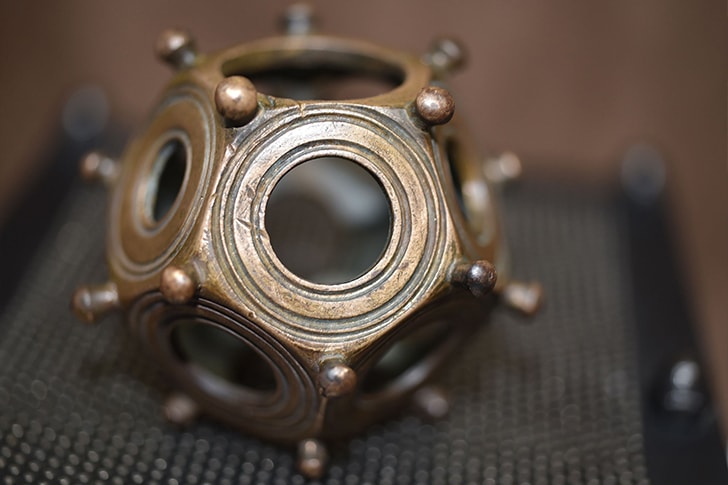
In August 1987, Brian Campbell found a small object in his East London backyard, which he would find out to be a roman dodecahedron over a decade or so later. Objects similar to this beautifully crafted bronze device have been found all over Europe, but modern historians still don't know exactly what it was used for.
Some speculate it was used as a candlestick since wax residues were found inside two roman dodecahedrons. Others say it was a sort of measuring device that could've been used for estimating distances. Most recently, a new theory linking the roman dodecahedron to knitting has surged online.
The London Hammer
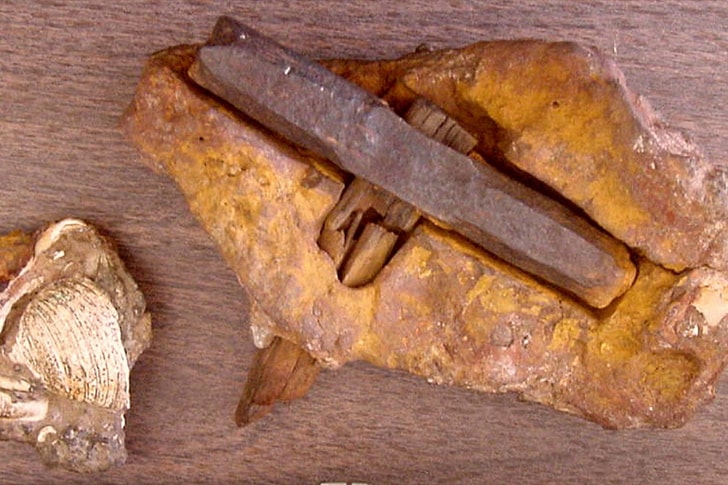
Discovered in 1936 by Max Hahn and his wife Emma, The London Hammer is one of the most mysterious historical objects ever found. Researchers were baffled by the hammer's mineral constitution, which proved to be extremely resistant and very well-engineered, but especially by how long it's been around.
According to its carbon signature, The London Hammer is around 500 million years old, and the rock it was encased in is about 100 million years younger. The unbelievable durability and craftsmanship associated with this tool are incredible. However, what's most mysterious about it is the fact that it comes from a time when humans were supposedly not around yet...
The Visoko Bosnian Pyramids
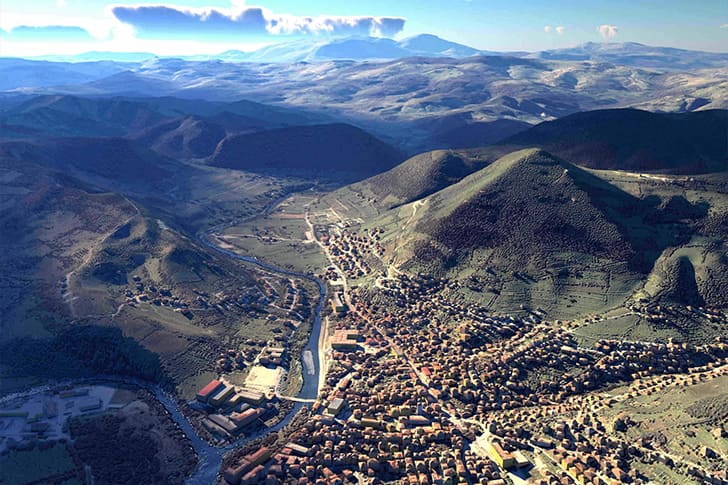
According to the Texas-based Bosnian businessman Sam Osmanagich, the Visoko Bosnian Pyramids are the largest human-made ancient pyramids on Earth. And while many believe him, the scientific community has proved once and again that Osmanagich is wrong.
It seems like the Bosnian businessman is trying to get some tourists to visit his home country by wrongfully insisting that the Visoko Pyramids are a man-made monument. Actually, these hills are natural formations shaped by erosion and known as flatirons, which were later artificially re-shaped by Osmanagich himself to look more like actual pyramids! The international community of archaeologists and historians highly condemns his actions.
The Voynich Manuscripts
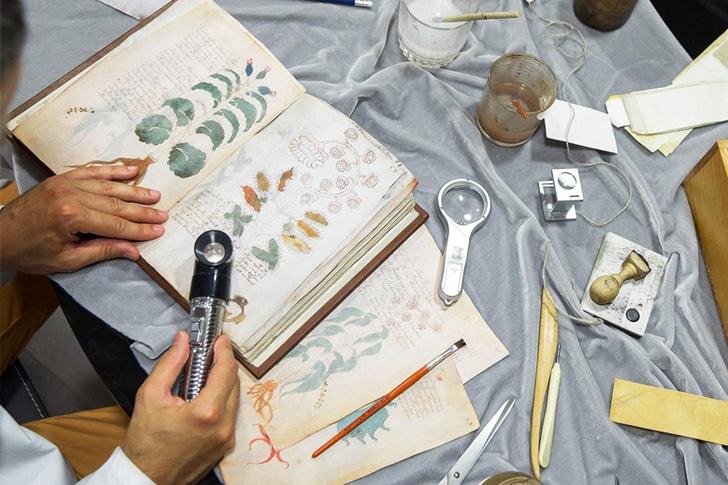
The Voynich Manuscripts are a collection of 272 handwritten pages containing mysterious texts and drawings. The book was bought by Polish-American intellectual Wilfrid M. Voynich in 1912, and to this day, it remains one of the biggest unsolved secret codes in the world. It's known as the book no one can read.
Lots of amateur and professional code breakers have tried and failed to understand the manuscripts' secret message over the years. For that reason, some believe that it's nothing but an arbitrary collection of letters and drawings. This theory, however, isn't supported by the scientific community. Its cohesion and scale make the case for its authenticity.
The Antikythera Mechanism
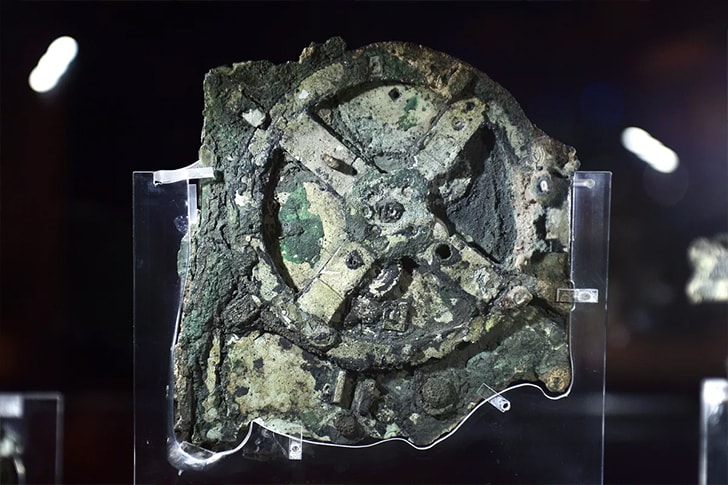
Few mysterious objects from the past look as futuristic as the Antikythera mechanism. Considered to be the oldest analog computer ever, this 87 BC machine was used by the Greeks to make astronomical predictions. It could have also been used to determine the exact 4-year cycle of the ancient Olympic Games.
In 1901, the machine was found by divers near the Greek island of Antikythera. Since its discovery, experts and historians have been baffled by how advanced this 2000-year-old machine appears to be. It is currently on display at the National Archaeological Museum in Athens.
The Rongorongo Tablets
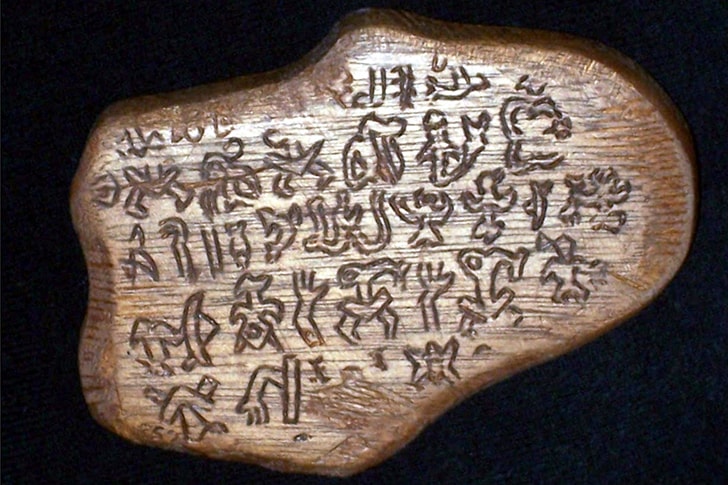
If the Voynich Manuscripts' indecipherable codes impressed you, then you will love the Rongorongo tablets! They were discovered on Easter Island—a pretty peculiar place on its own—and have since presented the world with a formerly unknown glyph-based language form. Supposedly written in the Austronesian Rapanui dialect, the Rongorongo type of writing is not known to exist outside the island.
This confirms the idea that Rongorongo is one of the few independently-invented languages in the history of humanity. It also helps sprout the conspiracy theories linking Easter Island's old civilization to an alien "occupation". The Rongorongo tablets often show humanoid-like glyphs that do not resemble any known living animal.
The Baigong Pipes
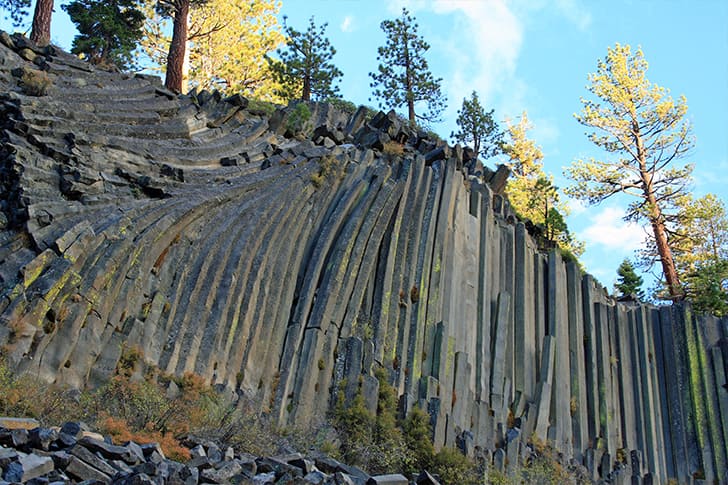
At the top of the Baigong Mountain, in the Chinese region of Haixi, mystery-seekers can visit the strange formation of tube-shaped rocks that became known as the Baigong Pipes. If you're guessing aliens, you're not alone. Multiple conspiracy theorists believe the Baigong Pipes were an ancient alien sewer system.
Of course, skeptic scientists have denied claims that link Baigong Pipes to extraterrestrial activity. A geological analysis concluded that the tubes are composed of 92% natural minerals and 8% unknown materials. The consensual opinion is that they are a group of fossilized tree root casts that may have resulted from the natural processes of pedogenesis and diagenesis.
The Baghdad Battery
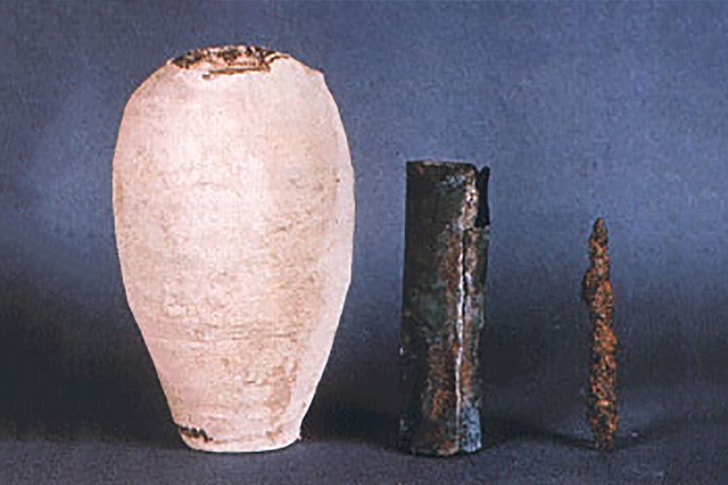
The Baghdad Battery is over 2000 years old and was discovered in the current region of Iraq. Some experts, like the investigator Wilhelm König, believe that this ancient object was used as a form of prototypes. Others dismiss this idea, considering that electroplating was not possible during the Parthian-Sasanian period and that its use is still undetermined.
During an episode of Discovery Channel's MythBusters, an attempt to replicate the Baghdad Battery was made. By using ten hand-made terracotta jars and lemon juice, they were able to generate 4 volts of electricity. Still, they have concluded that there are no archaeological or scientific connections between the Baghdad Battery and electroplating.
The Stone Spheres of Costa Rica

In the heaven-like island of Costa Rica, there's one of the most mysterious archaeological finds of all time. The famous stone spheres of Costa Rica can be found all over the country and have left the investigators speechless for years. Some of these stones weigh over 15 tons, and they're perfectly sculpted in an almost exact cylinder shape.
How did Costa Rica's old Diquis population pull this feat off without any kind of access to advanced machinery? The best theory is that the Diquis sculptors selected granodiorite stones that were already round-shaped. Then, they may have refined the boulder's shape to make these close-to-perfect mysterious objects.
The Aluminum Wedge of Aiud
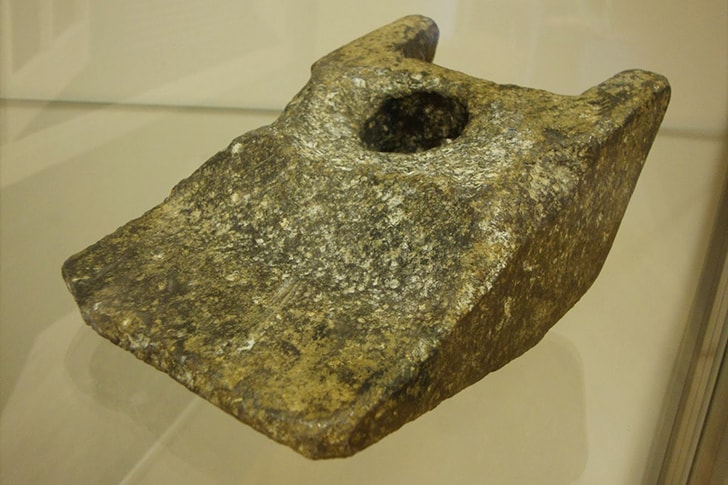
What's so strange about the Aluminum Wedge of Aiud? Apparently, this 11,000-year-old artifact was made out of a material that didn't exist until 1825! Like most mysteries, the Aluminum Wedge of Aiud's seemingly impossible composition was quickly inspected by UFOlogists, and their conclusion was... aliens. But let's forget about the extraterrestrial explanation for a moment.
More rational theories have pointed to the fact that the wedge is nothing but a lost tooth from a modern-day excavator. That's disappointing but happens to make perfect sense! After all, the wedge was first found on a construction site, and its composition includes traces of a recently-invented material called duralumin.
Waffle Rock
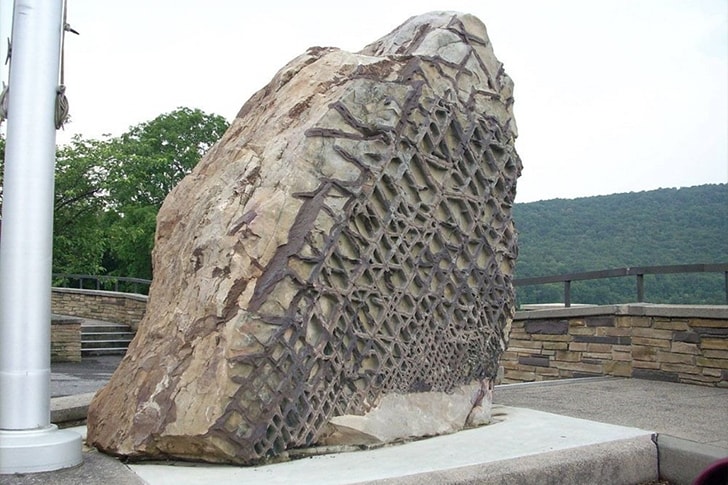
If you ever visit the Jennings Randolph Lake water reservoir, there's a mysterious object you cannot miss. In full and proud display, you will see the Waffle Rock! It's a mysterious natural formation that's been the target of multiple conspiracy theories. It has been connected to ancient societies, giant reptiles, and the ever-mentioned extraterrestrials.
The truth, however, happens to be quite different. According to the scientific community, the Waffle Rock's unique patterns resulted from a tectonic plate shift that took place about 200 million years ago. The tectonic movements formed cracks on the rock, which were later filled with water, sand grains, and iron oxide—forming a very resistant material.
Ruins of Atlit Yam
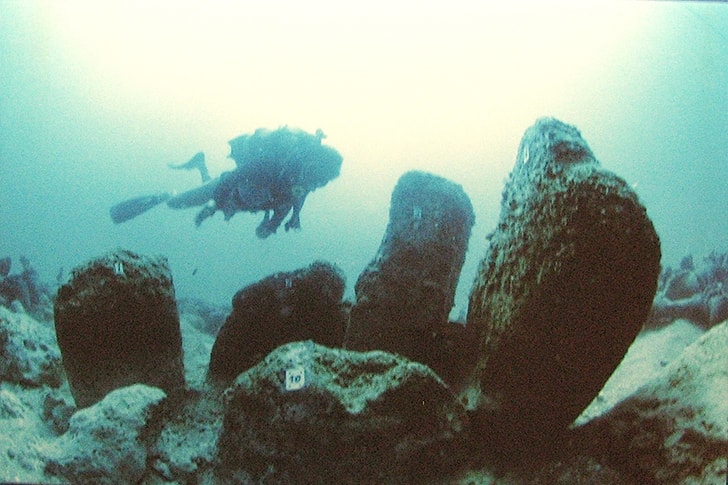
In 1984, divers exploring the coast of Israel discovered a mysterious underwater neolithic village known as the Ruins of Atlit Yam. The ruins included a stone circle and several human skeletons, some suffering from the earliest known cases of tuberculosis. The reason that caused the village to be submerged is unknown.
The best theory points out to a possible tsunami, reportedly caused by a Mount Etna volcanic eruption 8,500 years ago. According to a study conducted by the University of Haifa, the population of Atlit Yam lived in an agricultural-based community as arrowheads, cereal storage, and traces of swamps were found in the site.
Rat Kings

Only in a country like Germany would such a creepy object be made possible. The same people that gave us the terrifying "children's" tale of Hänsel und Grete had tangled a bunch of dead rats together for superstitious reasons.
The objects known as Rat Kings are, as expected, an omen of bad luck, being described by some investigators as a sign of pest and widespread disease. We know that the 18th century central Europe was never known for being a place of happiness and optimism. However, we did not expect things to be this grim!
The Ubaid Lizardmen
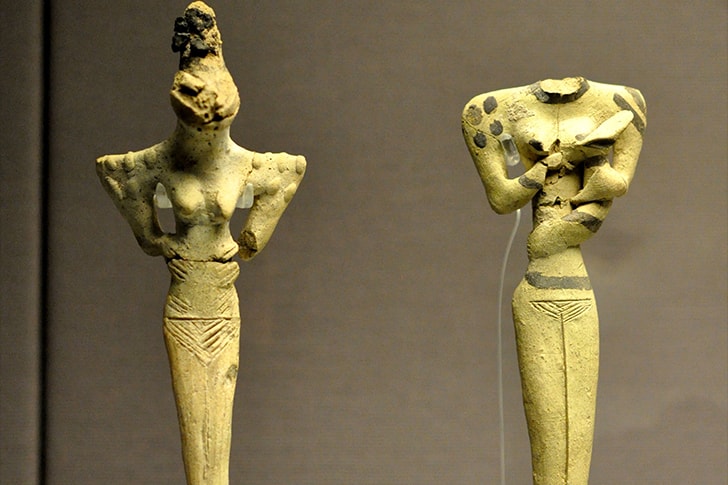
The Ubaid civilization disappeared around 7,000 years ago. Few things are known about them, but pieces of evidence show that the Ubaidians were actually quite advanced! They lived in mud houses, understood architectural techniques, thrived on agriculture, and used collective irrigation systems.
In the site of one of the first-ever civilizations, excavators were surprised to find the statues of two lizard-looking humanoids. The obvious explanation for these figures is that they were incorporated in some sort of religious rite. However, experts believe these don't display the usual traits associated with the religious objects of that time. For that reason, the Ubaid Lizardmen remain a fascinating mystery.
The Lake Winnipesaukee Mystery Stone
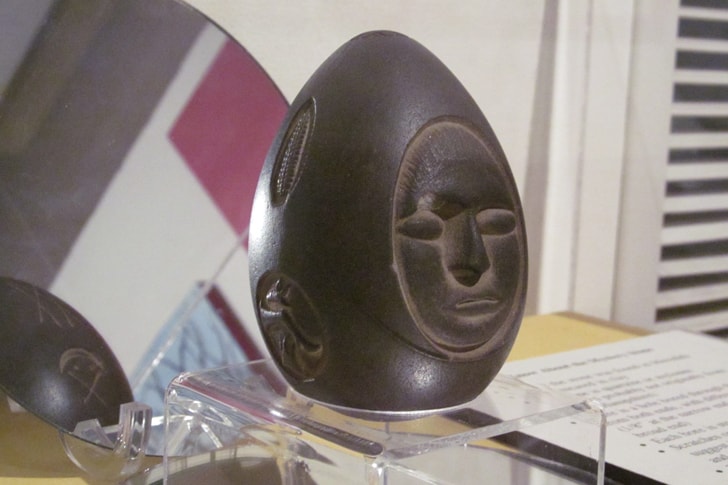
In 1872, this egg-shaped head sculpture was found in a New Hampshire construction site near Lake Winnepesaukee. Immediately, speculation regarding its origin arose among specialists and the rest of the population. To this day, the Lake Winnepesaukee mystery stone is still an unsolved enigma.
A borescope analysis in 1994 allowed archaeologist Richard Boisvert to claim that 19th to 20th-century machinery was used in the construction of the mysterious stone. The artifact, previously associated with ancient Native American tribes, could not have been several hundred years old. Its extreme regularity is not compatible with the unevenness of the other prehistoric archeological findings made in the continent.
The Sumerian King List
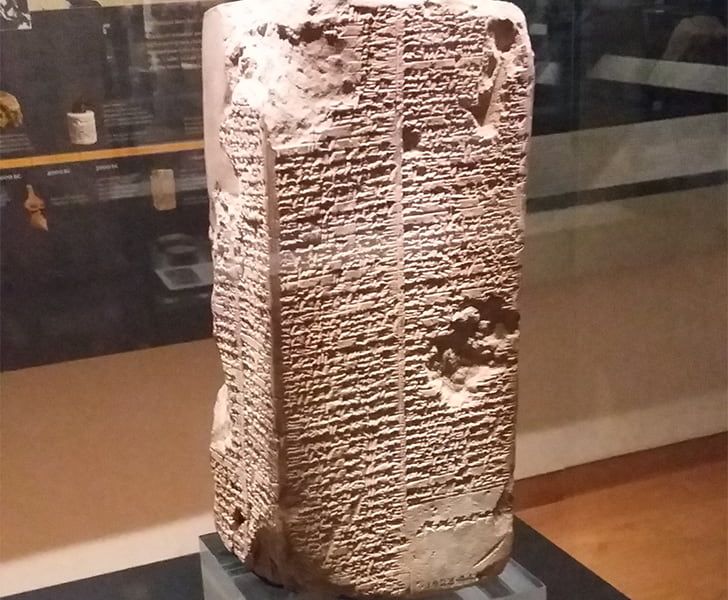
In our modern society, fact and fiction are two separate concepts that are rarely combined. But things were not that clear for the Sumerian people. In the Sumerian King List, the names of actual Sumerian kings are combined with the names of fictional entities that supposedly never existed.
At the onset of the 1900s, the object found by the German-American scholar named Hermann Hilprecht startled the experts. Its text was impressively accurate, yet it raised doubts regarding the existence of entities that were believed to be fictional. We guess it's another one for the alien-fanatics to hold on to!
The Shroud of Turin
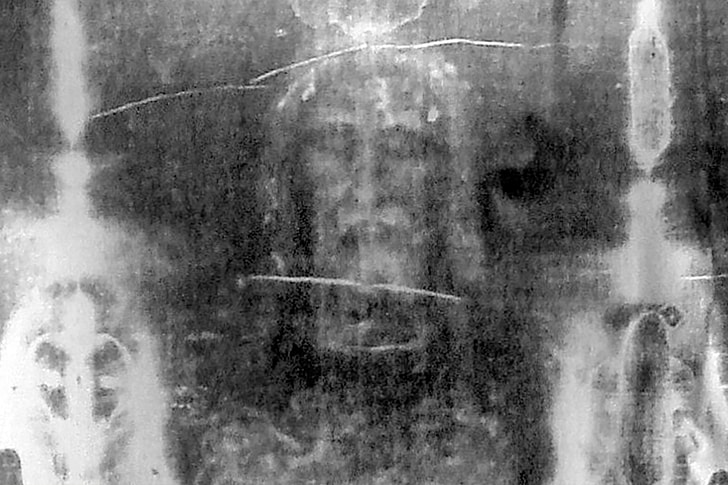
Shrouds are used to cover buried dead bodies and protect their remainings. The Shroud of Turin, also known as Santa Sindone, was considered to be the shroud of Jesus of Nazareth. Besides a facial imprint highly resembling Jesus' features, there were signs that the shroud had been used to cover a crucified man. That's about all the evidence people needed back then!
Yet, it didn't take long for this object to be seen as a hoax. In 1390, long before skepticism was even a common thing, a local bishop denounced that the shroud was a forgery after being told so by its original—and still unknown—creator.
The Codex Gigas
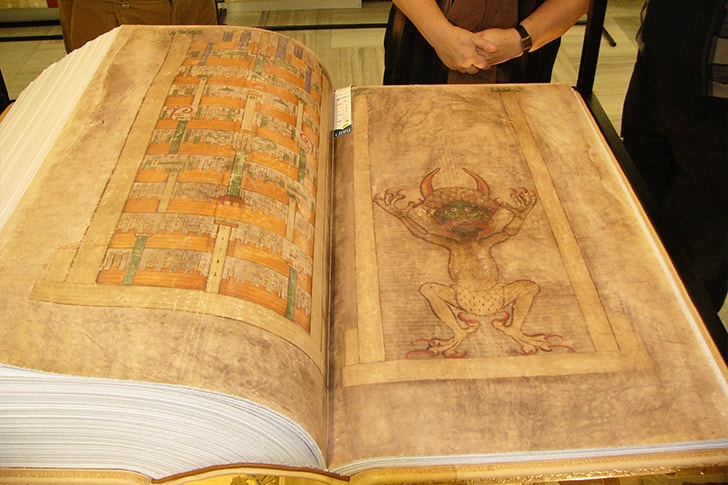
The medieval times of Central Europe continue to be scary with our next mysterious object: the Codex Gigas. Known as the Devil's Bible, this manuscript was created during the 13th century in the monastery of Podlažice found in Bohemia (now known as the Czech Republic). It's a compilation of various religious texts, including passages of the actual Bible.
The Codex Gigas ended up being highly popularized by a society fascinated with dark magic and Satanic-related subjects, largely due to the recurrent scary sketches of the Devil accompanying the Latin text. The Codex content, however, is largely similar to most of the literature produced in the European monasteries back then.
Dogū
The rich and virtuous Japanese culture has finally gone mainstream. Judging by the Dogū statues, the Japanese have been designing great action figures ever since the year 1000 BC! The quite cute figurines were made during the Jōmon period, and approximately 15,000 of them have been found by modern-day archaeologists.
The Dogū would make a great toy, decoration object, or Christmas present. But the Japanese, as usual in ancient societies, used it for magic. Just like a voodoo doll, the Japanese believed that the Dogū was able to suck-in all your fears and diseases. This kind of superstitious practice is formally known as sympathetic magic.
The Quimbaya Artifacts

The Quimbaya artifacts are mysterious ancient objects found in Colombia. Ancient astronaut theorists believe that they represent modern airplanes, and if you ever caught History Channel at 2 AM, you probably know what we're talking about. According to these theorists, the Earth was once visited by kind extraterrestrial beings who helped build some of the world's greatest lost civilizations and monuments.
In the real world of modern archaeology, the Quimbaya artifacts, which dated around 1000 CE, are seen as decorative objects depicting animals and insects, rather than alien aircraft. The tiny golden artifacts are currently displayed at Bogotá's Gold Museum.
Sacsayhuamán
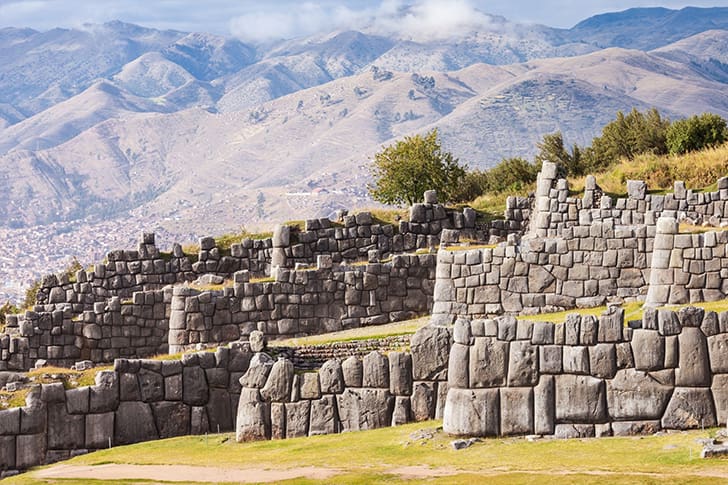
The Sacsayhuamán is arguably the largest ancient monument of Peru and the greatest symbol of the lost empire of Inca. It consists of a gigantic citadel of ruins, situated right outside the city of Cusco. The experts believe it was built to defend the Inca population from the neighboring hostile tribes. This military strategy involved using large stones to make a complex set of dry stone walls.
Nowadays, Sacsayhuamán is a great site for tourists, but also conspiracy theorists. The alien fanatics (yes, these guys again) believe it could have been used as an alien communication channel, working as a lighthouse for extraterrestrial pilots and spaceships.
The Piri Reis Map
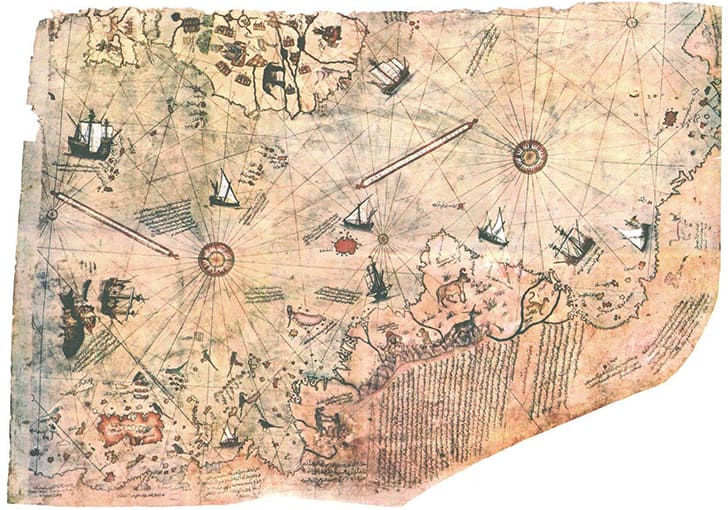
The Ottoman admiral and cartographer Ahmed Muhiddin Piri, best known as Piri Reis, was a notable 16th-century man. In 1513, he compiled a world map whose accuracy and detail still impress scientists today. For starters, the map precisely depicts features of the American landscape that couldn't have been known at the time. But there's more...
Shown in the Piri Reis map is the lost/fictional island of Antillia, also known as the Isle of Seven Cities. This legendary site was supposedly founded by Visigothic bishops escaping Iberia after a Muslim invasion. Placed in the map far west from the Portuguese coast, some associate Antillia with the concocted isle of Atlantis.
The Mount Owen Moa Claw
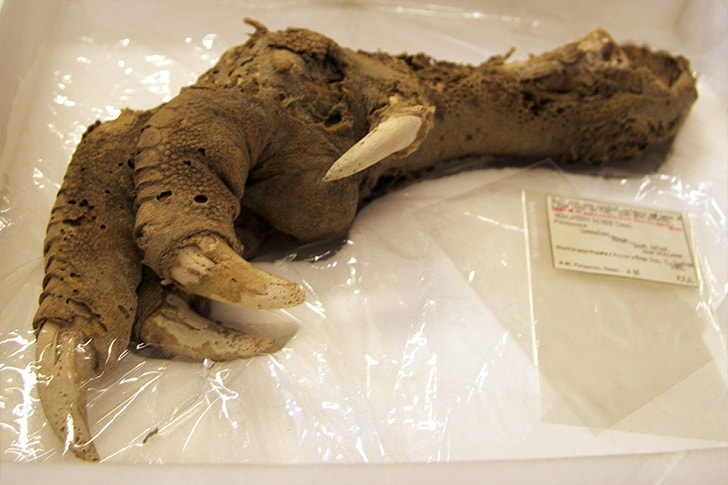
Discovered in 1986 by a group of New Zealand researchers exploring one of the island's caves, Mount Owen claw is one of the most terrifying archaeological discoveries of all-time. But as it turns out, the dreaded-looking claw was nothing but the mummified remains of a prehistoric bird called Megalapteryx didinus (Moa for short).
So, where's the mystery? The most stunning fact about this discovery is its timing. While the Moa claw is 3,300 years old, the last known moas were extinct hundreds of years before that period! This still unexplained inconsistency has turned this discovery into one of the most mysterious archaeological findings of the 20th-century.
The Gate of the Sun
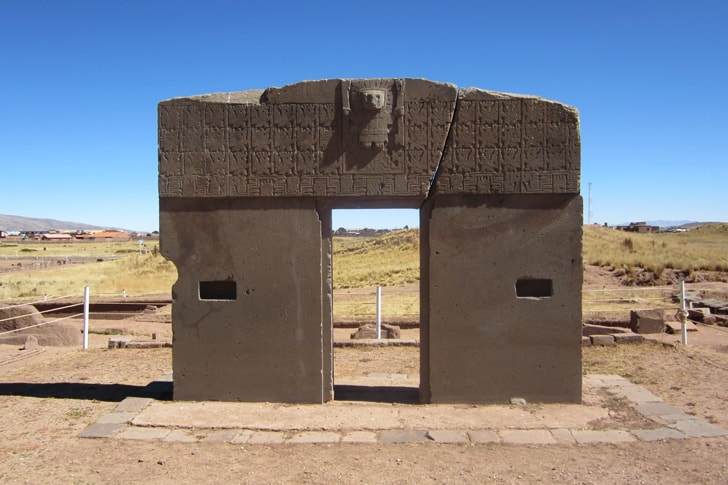
Ancient cultures loved to carry and sculpt impossibly heavy rocks, and the Gate of the Sun is yet another example of a megalithic monument that's able to make a strong impression on our machine-dependant contemporary society. Located near Lake Titicaca, in Bolivia, the Gate of the Sun weighs 10 tons and was discovered by European explorers in the 19th century.
This mysterious mystical-looking gate sits in the Tiwanaku region, an archaeological site where multiple megalithic vestiges can be found. Scientists believe that the ancient pre-Colombian people considered Tiwanaku to be the center of the Earth. The name 'Tiwanaku' comes from the Aymara expression taypiqala, which means "stone in the center".
Qin Shi Huang's Terracotta Army
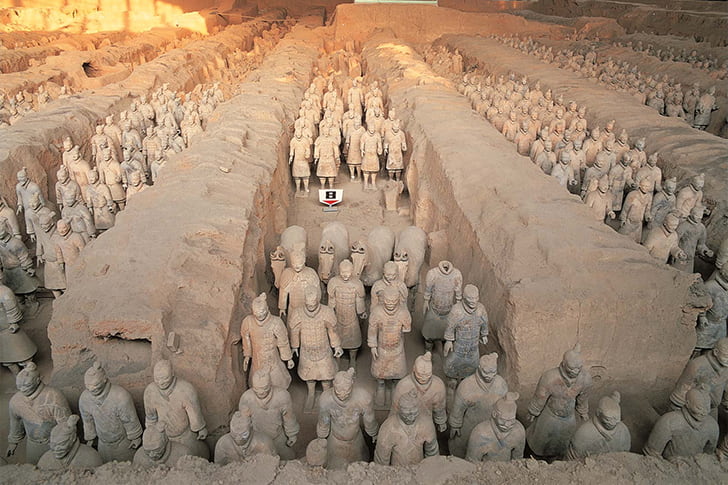
The Qin Shi Huang's terracotta army was accidentally discovered by a group of Shaanxi farmers in 1974. Qin Shi Huang was the founder of the Qi dynasty and the first ruler of a unified China. Standing in formation, the soldier's statues are meant to protect the soul of Shi Huang in the afterlife.
Qin Shi Huang's tomb is one of the biggest ever discovered in China. It includes an underground palace, a drainage system, and a group of adjacent underground caves. Since there are high levels of mercury in Qin Shi Huang's mausoleum, a great part of the site remains unexcavated.
Stonehenge

A list of mysterious objects of the Universe wouldn't be complete without Stonehenge. This highly-popularized megalithic circle of rocks can be visited in Salisbury, an English cathedral city in Wiltshire. According to experts, this prehistoric monument was built 4,000 years ago.
However, the most exciting thing about Stonehenge is probably the fact that, until today, no one knows why it was built. Theories are linking it to astronomical observation, but this was always primarily based on speculation. Stonehenge remains a mystery, and mysteries do tend to sell! The monument is visited by approximately 1.5 million people every year.
The Copper Scroll Treasure
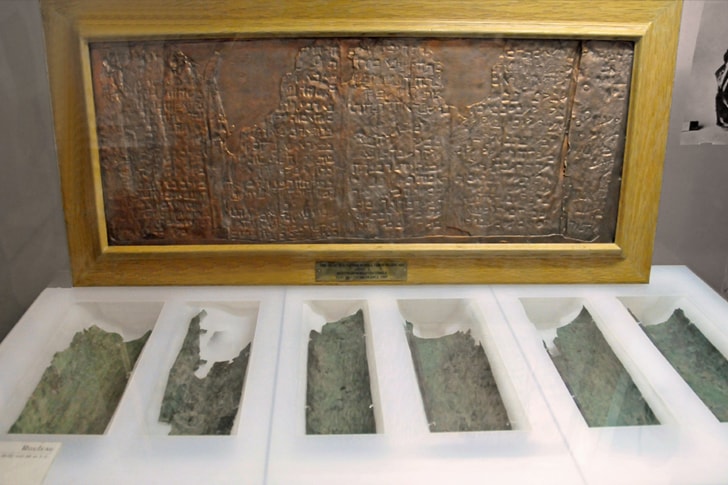
The Copper Scroll is still considered to be part of the Dead Sea Scrolls, although it's very different. For a start, it wasn't discovered by Bedouins, but archaeologists. Additionally, experts believe it might have been added to the other scrolls at a different time. Most importantly, it's composed in a strangely unique manner that makes it impossible for even the experts to unlock it.
Written in a time-lasting copper surface, the Copper Scroll contains information naming 64 locations. These locations are, according to the document itself, the site of hidden treasures of gold and silver. Still, no one was able to correctly follow its puzzling instructions.
Sanxingdui Lost Treasures
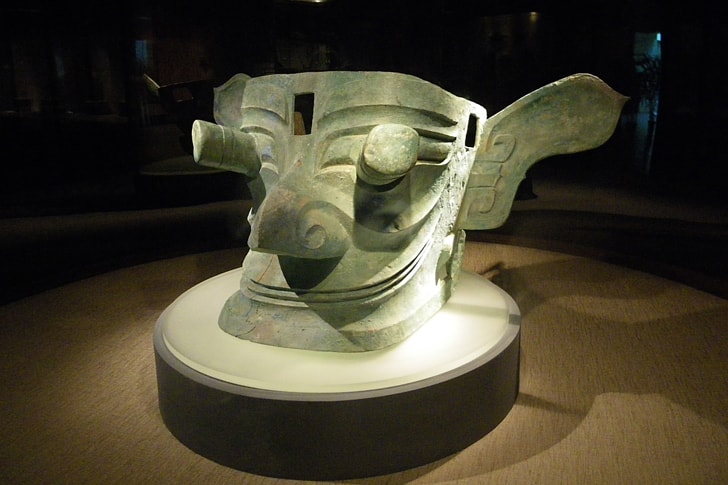
In 1929, a man in charge of fixing a Chinese sewage ditch in the province of Sichuan stumbled upon a couple of ancient jade objects. These were later sold to unknown collectors, but the finding attracted archaeological interest to the region. In 1986, the secret treasures of Sanxingdui were finally uncovered.
The Sanxingdui is an archaeological site in Guanghan that is filled with Bronze-age artifacts, including a large repertoire of folk-inspired heads and masks like the one depicted above. The collected Sanxingdui items have been linked to the lost kingdom of Shu and can now be seen in display at the Sanxingdui Museum.
The Lost City of Atlantis
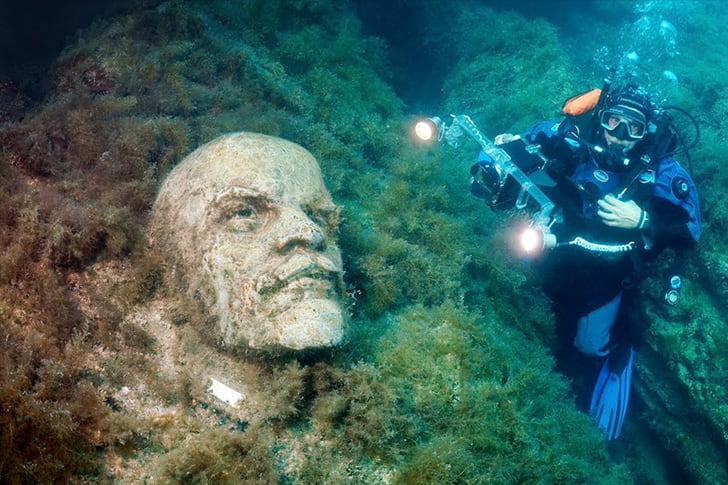
In 400BC, the lost city of Atlantis was mentioned in one of Plato's passages. From that point onward, humans have already solved the mysteries of electricity, space traveling, and car engineering. Yet, we haven't been able to solve the Atlantis enigma. For now, the best we have are theories.
Some people believe that Atlantis could've been located in the Bermuda Triangle site, while others link it to Piri Reis' Antillia (as we have mentioned before). But according to National Geographic investigators, Atlantis never existed in reality, and it's nothing but a fantastic story passed from generation to generation for over 2,500 years.
Isis Beamer Harmonizer

The alien-looking object depicted above was found in Jerusalem by a cemetery groundskeeper. An odd-shaped golden device, it looked like something factory-made. However, many initially suspected that it was an ancient artifact. A fair consideration, especially if you take into account that it was discovered in the antique-filled grounds of the Israeli region.
It turns out that this weird object can be bought online for roughly $400. It is an Isis Beamer harmonizer, and it's a new age product designed by a German company called Weber. According to Weber, it allows you to balance electromagnetic radiation fields and harmonize your 7-Chakra system... Whatever that's supposed to mean!

